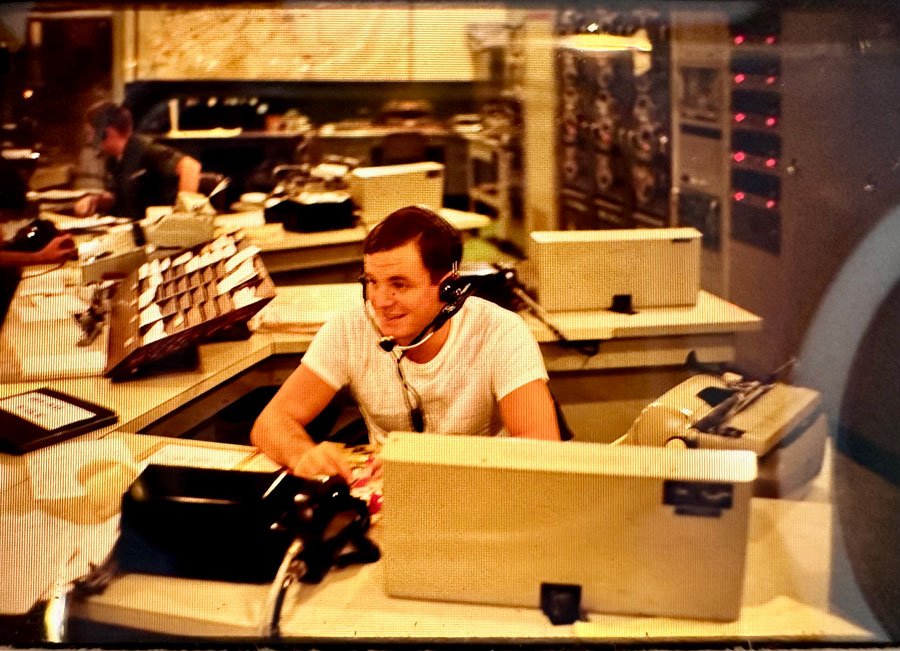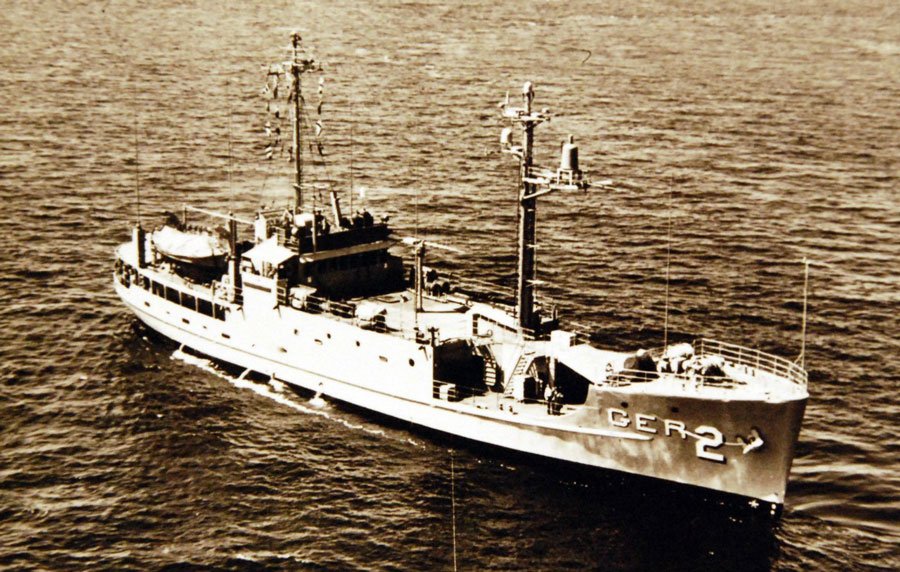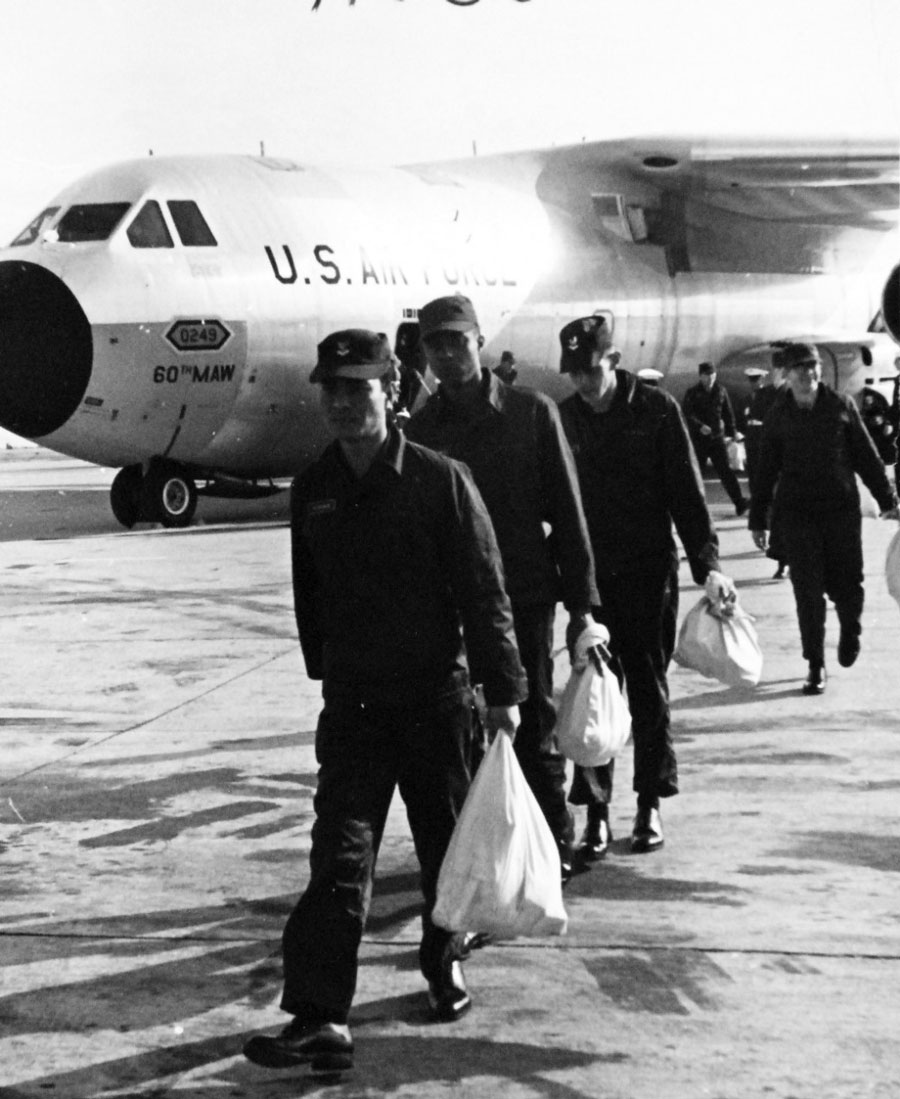We Were at DefCon 2–One Step From Nuclear War–and I Was Checking My Work
Jan. 23, 1968, was an exciting day for me. I had no idea just how exciting it would turn out to be.
I’d recently returned from three weeks of leave in the US and was finishing up an 18-month tour in the Philippines that included several assignments to exotic places up and down the archipelagic nation. At 21, I felt much more worldly and sophisticated than all my family and friends.
Jan. 23 was my promotion date to staff sergeant and my last scheduled shift at Clark Airways, a US Air Force hub that served as a worldwide communications link for military and civilian charter flights.
With the resources of the 104th Tactical Fighter Wing, we provided the Philippines’ air defense system, which could scramble against any unknown aircraft that might pose a threat. Our mission also included Sky King, which maintained communications with the constantly airborne nuclear-armed B-52 fleet. We would receive coded messages randomly but frequently that we authenticated and then broadcast on all our monitored frequencies.
It went like this: “Sky King, Sky King, this is Clark, this is Clark. Do not answer, do not answer, break, break.” A series of four alpha characters we created from a top-secret cipher code book soon followed. “Bravo sierra zulu tango, I repeat bravo sierra zulu tango, authentication time is 17:35:15 zulu, I repeat, authentication time is 17:35:15 zulu. This is Clark, out.”
The purpose was to ensure the B-52s were still in touch and could receive messages from their command headquarters. We sent 50 to 100 of these each day.
I began my final 12-hour shift at 6 p.m., manning the watch desk through various mission positions.
Then all hell broke loose.
The security line on which we received our Sky King messages buzzed.
I answered it with the normal response and challenge to the controller on the other end to send back the authorization code based on a mutually held, top-secret challenge-response system. They did, then proceeded to give me a Sky King message—an event that had happened literally thousands of times before. Only this time, I couldn’t find their code.

A standard broadcast station where Sky King messages would be broadcast from. (Photo courtesy of the author)
This happened occasionally, usually through “operator error” on one side of the link or the other. We would respond “unable to authenticate” and immediately terminate the connection. Then we’d check ourselves to ensure the error wasn’t on our side of the link.
But the other security line buzzed before I could do that this time. I went through the entire authentication procedure only to receive another code I couldn’t find, so I terminated that link just as the first line lit up again.
With two failures from two different sources, I immediately realized the problem was on my end. I could feel the panic start to rise in my stomach. The third try went the same way as the first two, and it was amplified by the buzzing of the second line for the second time.
Award-Winning Journalism in Your Inbox
It was 2:30 a.m., and I knew I was in trouble.
Both lines buzzed, and I began to feel sick. Then a phrase popped into my head from Sister Margaret, my eighth-grade schoolteacher who had prepared us for a statewide exam we’d had to pass to graduate.
Before you move on from one math problem to the next, check your work, Sister Margaret had told us over and over.
With that, I started the process from the beginning, scanning every line of the code book against the codes I had been given. Still no match.
During the thousands of times I’d performed this little ritual, the codes had always been right there on the front of the first page.
I did it again. Still no match.

The USS Pueblo underway in 1968. (Photo courtesy of the National Archives)
Then I turned the page over and realized for the first time there were more codes on the back. I had never looked there, and no one had ever told me to. It had never been necessary. But there at the very top of the page were the first, second, and third codes that I had been given.
I immediately answered the second line for the second time and a clearly agitated airman put me through the challenge-response system and gave me the fourth code on the back of the page. I quickly created the new Sky King message using this code and gave it to the broadcast station for transmission. I went back to the first line and did the same thing. This went on for several minutes.
Then the strangest thing happened. We got a call from an aircraft on several of our monitored frequencies simultaneously with a signal strength that pegged our audio meters and caused the operators to tear their headphones from their ears.
“Clark, this is Doom 45, please repeat your Sky King message.”
This had never happened before. The operator looked at me for a decision, but before I could say anything it happened again.
“Clark, this is Ghost Rider 70, please repeat your Sky King message.”
Meanwhile, both security locations buzzed again.
“Clark, this is Titan 47, please repeat your Sky King message.”
Buzz, buzz.
“Clark, this is Panther 55, please repeat your Sky King message.”
Buzz, buzz.
I have always thought it is better to do something rather than nothing. Better to explain your action than to justify your inaction.
I told the operator to repeat all the Sky King messages, and I went back to getting new ones and broadcasting those. Just as I began to feel like I had things under control, every other line on my console lit up.
First, it was the base duty officer who told me that we were now at DefCon 2—one step from nuclear war. He told me to go to the communications safe, equip myself with the .45-caliber pistol kept there, and arm the safe’s self-destruction system.
The next message came from the Clark Air Base tower operator, who instructed me to block all traffic from all altitudes from Clark northbound to the boundary of our airspace just south of Okinawa. I knew this operator quite well.
“What the hell is going on?” I asked.
He said he didn’t know, but he had just learned the entire 104th Tactical Fighter Wing—all 60 fighters and dozens of support aircraft—would be leaving en masse over the next 90 minutes or so. As these flights of three, four, or five aircraft departed, they’d check in with us.
Everything happening was classroom stuff. We had never actually practiced or held an exercise on any of this—much less actually done it. After my bolloxed beginning, we settled down and actually got the job done.
Fifteen minutes before the end of our shift, our commanding officer showed up. He briefed the oncoming airmen, and we finally found out what had happened that night.

Crewmen of USS Pueblo debark from a US Air Force VC-137C “Stratoliner” cargo transport after a flight from the Republic of Korea in December 1968. (Photo courtesy of the National Archives)
The North Koreans had seized one of our ships, the USS Pueblo, and taken it and its 83-man crew hostage. They were bound, blindfolded, and taken to Pyongyang, where they were charged with spying. They were held captive for 11 months, during which time they were beaten and tortured.
Our Journalism Depends on Your Support
The next day, I learned the Sky King messages I initially screwed up were DEFCON 2 notifications and orders to move to their preprogrammed nuclear strike “go/no go” positions.
I’d been communicating with B-52 pilots on the verge of nuclear war, and I hadn’t even known it.
A week later, I left for Vietnam.
This War Horse reflection was written by Ed Meagher, edited by Kristin Davis, fact-checked by Jess Rohan, and copy-edited by Mitchell Hansen-Dewar. Abbie Bennett wrote the headlines.





Comments are closed.